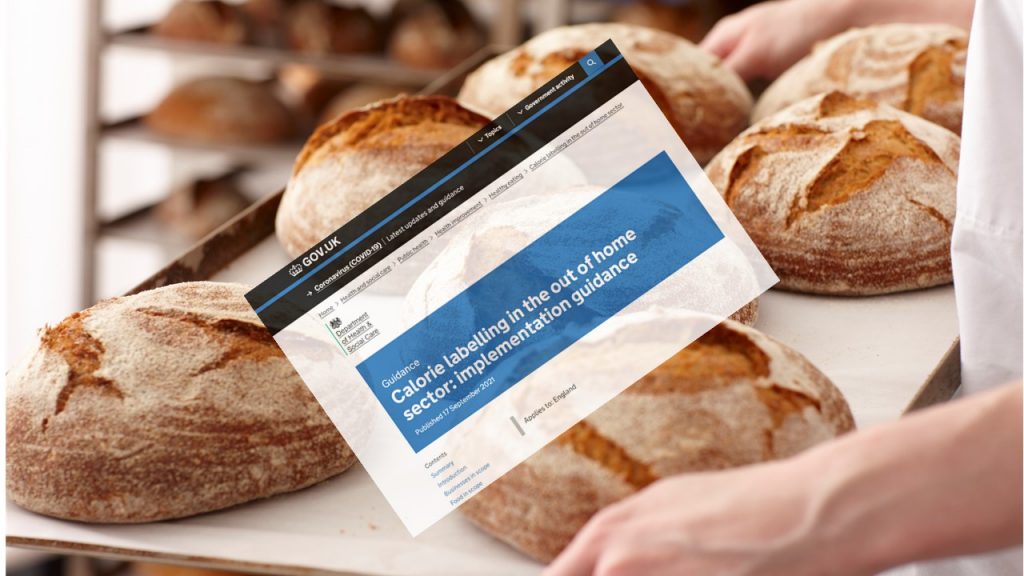The Association of Convenience Stores (ACS) has detailed new guidance on the calorie_labelling rules that come into force from April this year, requiring retailers within the scope of the new regulations to add calorie and portion information to menus and displays of ‘ready-to-eat’ products like Supermarket/C-store grab and go products such as hot beverages, in-store bakery items loose pastries, cakes, biscuits, and other RTE items like sausage rolls, pasties, sushi, cooked pizza and sandwiches (see here for a more complete list and guidance). Retailers will also be required to display a notice highlighting the number of calories recommended for an adult in a day.
Retailers with more than 250 employees are considered within the rules’ scope, but the Government intends for symbol and franchise retailers to also be included. As part of the guidance, ACS urges retailers to contact their symbol or franchise operator to find out whether they’ll have to make changes in-store and online to comply with the regulations.
The regulations are part of the Government’s broader strategy to tackle obesity, which includes the controversial rules on promotion and location of High in Fat, Salt and Sugar (HFSS) products that are due to come into force in October, as well as tighter restrictions on the advertising of HFSS products on television and online.
ACS chief executive James Lowman said: “It’s essential that retailers understand their responsibilities when it comes to the new calorie labelling requirements. For the majority of businesses in scope, this will mean contacting your supplier about the new materials that will have to be displayed in-store, but there are some for whom more significant planning is required. We urge retailers to engage with the guidance and come to us with any questions about the detail.”
The required information should be displayed clearly and prominently at the point where the customer decides what food to buy. This is usually beside the name, description or price of the food item, shown in the same size and font as these food descriptors. The required information is:
- The energy content of the food in kilocalories (kcal).
- The size of the portion to which the calorie information relates.
- A statement that ‘adults need around 2000 kcal a day.
So is this requirement a burden or an opportunity for retailers?
Implementing this regulation will undoubtedly generate an additional burden on businesses that have already faced incredible challenges in recent years. However, studies show that companies can benefit from presenting calorie, allergin and ingredients information to consumers by increasing customer loyalty, reducing food waste and growing revenues. And of course, eating more healthily!

Are you prepared? Answer these ten questions to find out.
Suppliers, Ingredients, Recipes, Calories & Datasets
- Can I source ingredient information digitally from my Suppliers?
- Do supplier datasets provide complete calorific/nutritional/ingredient information?
- Are all recipes clearly documented?
- Is there a robust workflow process to use/revise, and maintain ingredient information?
- Do my existing tools enable the use of information in deriving calorific values of recipes?
Staff, Customers & Technology
- What training or support will my staff need to implement these changes?
- How will I know all my staff have read and understood the new changes?
- What opportunities are there to better understand and provide for my customers’ needs?
- Do I have the capability to adapt my menu designs to display calories in digital and print formats?
- Do I need to upgrade my toolkit? What technology solutions are out there that can help?
How to fix this problem and put something in place for future regulation?
Metro Print Master provides a simple solution that allows complete integration into existing systems or an easy, quick start, stand-alone pay-as-you-use solution if prefered.
How does it work?
Metro Print Master collates all of your promo items by SKU in a cloud-based database for access from any location or device. It provides a set of tailorable templates to fit your existing signage holders/sizes and any other shelf edge label requirements you may require. These templates are edited to encompass your organisation’s branding and artwork, ready to be selected and load the appropriate data from your POS solution and via direct entry through a browser or the Metro Print app. All additional descriptive data is stored to augment the standard description and price and can be centrally created or managed locally – the database maintains relevance to location and regulatory requirements and, of course, the extended data as required by the Government.
In short, it’s simply a case of typing in a SKU (or scanning depending on your device choice), selecting the size and style of your desired print from a drop-down list of your customised templates, adding the appropriate size of portion, kcal quota and any additional messages that are currently mandated. Select ‘save’, and your additional data is stored in the cloud, ready for recall at any time and any number of updates and modifications.
It’s time to expand your signage capability. Super fast and at a fraction of the cost of existing solutions.
Book a free consultation to find out more.
Recent Comments